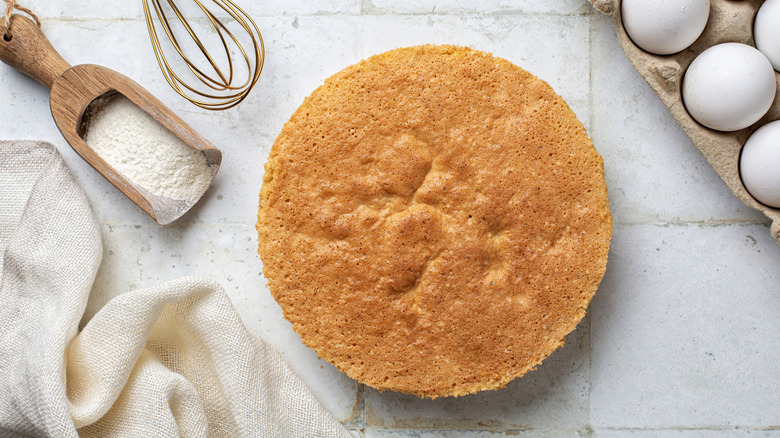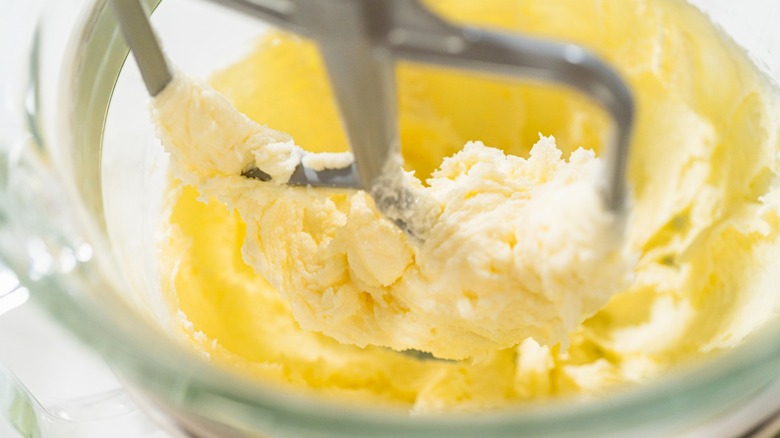The Method That Will Change Your Yellow Cakes Forever
There is nothing wrong with using a boxed mix for a birthday cake or any occasion you want to accent with a sweet treat. After all, boxed cake mix is seriously versatile and can make anything from cinnamon rolls to fudge. It is also consistent — you know exactly what you are getting every time, barring any mistakes made when baking the cake. Still, folks with a little more ambition know there is something rewarding about making it from scratch. Done correctly, you can get a better product out of the oven, and you also avoid consuming hard-to-pronounce ingredients often lingering in boxed cake mix, like polyglycerol esters of fatty acids and cellulose gum.
Making a homemade cake typically begins with creaming butter and sugar into an airy, uniform consistency. However, once you blend in the eggs and especially once you start adding dry ingredients, you have to be cautious about overmixing the batter. Too much motion encourages gluten to develop, which can make your dessert dense and dry.
Instead of going the traditional route, consider using the reverse-creaming technique, which can ward off tough cakes. This calls for mixing all your dry ingredients first, then adding the butter, which coats everything and gives it less opportunity to form gluten. Folks doing this for the first time might get nervous when they notice that the consistency looks off compared to a traditional batter — at first. However, if you follow through with confidence, you will love the moist, fluffy result that comes out of the oven.
How reverse-creaming makes a better cake
The first procedure in reverse creaming is to simply blend your dry ingredients, but it's not a step to rush. Using a whisk to get it done is fine, but a stand mixer requires much less effort and accomplishes the goal in mere seconds. However you do it, it is crucial to ensure the baking soda, baking powder, and sugar are well-blended into the flour. If not, the texture of the cake may be on point, but if leaveners aren't evenly distributed, the cake could look like Swiss cheese when you cut into it.
The next stage is where some people get thrown off. After you mix in the butter, the consistency will appear grainy instead of light and airy. Don't fret — that is what you are going for. The butter covers the flour and prevents gluten from forming, but it can look odd to folks unfamiliar with the technique.
Finally, toss in your wet ingredients like eggs and vanilla, mixing until you see a more familiar batter consistency. Bake the cake as normal and get ready to enjoy a tender, fluffy bite with every forkful. Because baking is so much more scientific and precise than making other dishes, folks are often leery about veering off the tried-and-true methods they've used successfully for years. Yet, if you are willing to step outside your comfort zone, you may find the reverse creaming method becomes your go-to technique for baking velvety yellow cake whenever the occasion presents itself.

